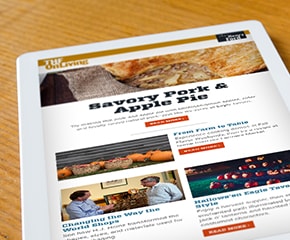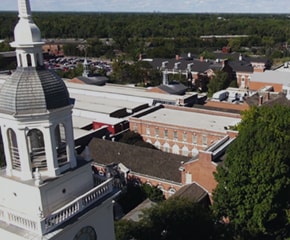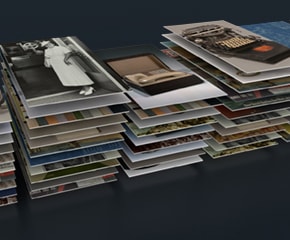
New Digital & Physical Experiences
The World’s Premier Automotive Exhibit
As the 21st century began, The Henry Ford’s automotive exhibit, Automobile in American Life, was into its second decade of life, and needed a refresh. In a major change that affected 80,000 square feet on the Museum floor, Driving America roared into life in January of 2012.
Driving America is more than an exhibition with cars on display. It is really an interactive, state-of-the-art story of us—us as drivers, consumers and enthusiasts. It examines the car as an innovation and explores how it has changed almost every aspect of our lives and heavily influenced the decisions we make.
 Patricia Mooradian
President, The Henry Ford
Patricia Mooradian
President, The Henry Ford
Not only were the themes and artifacts included in the exhibit completely rethought, but digital technologies were integrated from the beginning to fuel touchscreen kiosks containing activities, curator interviews, and tens of thousands of digitized artifacts from The Henry Ford’s collections—including a substantial new set of glamour shots for each vehicle in the exhibit. This first big experiment with digitized collections within an exhibit is forming the basis for the use of interactive technologies in upcoming exhibits.
It really changes everything. It’s a historical first to have a full aluminum body built on such a scale. We were pressed with how to tell the story in a way that brings this level of innovation front and center.Cynthia Jones General Manager, Ford Rouge Factory Tour
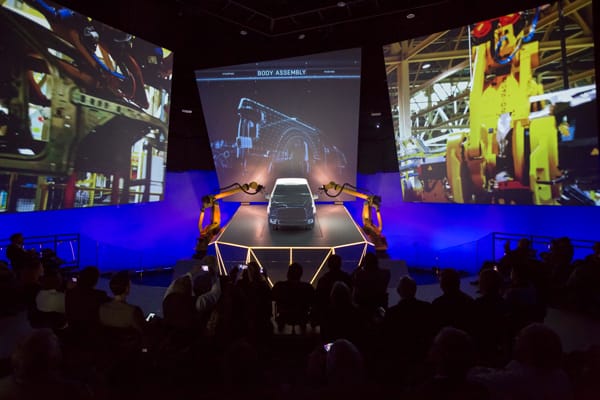
Technology Accelerates at the Rouge
In late 2014, Ford Motor Company began producing the first mass-produced truck in its class featuring a high-strength, military-grade, aluminum-alloy body and bed after having completely redesigned its F-150 assembly line at the Ford Rouge plant. This posed a challenge for the Ford Rouge Factory Tour—the manufacturing story had completely changed. An overhaul of the entire experience involved updated experiences in both theaters, particularly in the Manufacturing Innovation Theater, offering a multisensory, multidirectional show. An interactive kiosk, similar to those installed in Driving America, was also installed to allow visitors to access The Henry Ford’s digital collections with the touch of a finger.
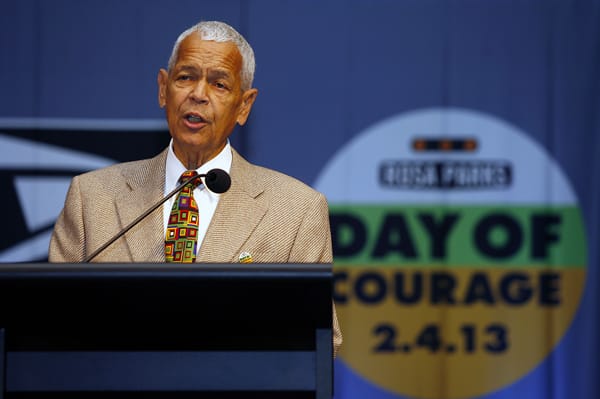
Anniversaries and Remembrances
Despite the growth in digital experiences, the power of physical artifacts is still undeniable. Many significant anniversaries related to the objects and stories of The Henry Ford have been observed with events within Henry Ford Museum and Greenfield Village in recent years.
One of the largest and most notable was the Day of Courage, celebrated with an all-day event on February 4, 2013. Historians, musicians, students, and Museum guests remembered the life of Rosa Parks on her 100th birthday. In November 2013, lectures by newscaster Dan Rather and former Secret Service agent Clint Hill, as well as an opportunity to visit the fateful limousine, formed a remembrance of President John F. Kennedy on the 50th anniversary of his assassination. April 2015, the 150th anniversary of President Abraham Lincoln’s assassination, was marked with a lecture by historian Doris Kearns Goodwin and the first removal of the Lincoln chair from its display case in decades.
Village Growth
While the Village has not yet seen any more changes as substantial as those that occurred in the early part of the 21st century, the period since 2010 has brought a couple of notable upgrades to the working districts of Greenfield Village. One was the 2014 addition of a 50-foot-tall coaling tower, based on historic designs and used to store and load coal into the historic operating locomotives of Greenfield Village.
The other recent project was the physical expansion of the Pottery Shop in 2013, a project sparked by the need to replace a salt kiln that was nearly three decades old. The kiln room was rebuilt and slightly expanded, and by reconfiguring the layout, a spacious area for the decorators to work was also created.
